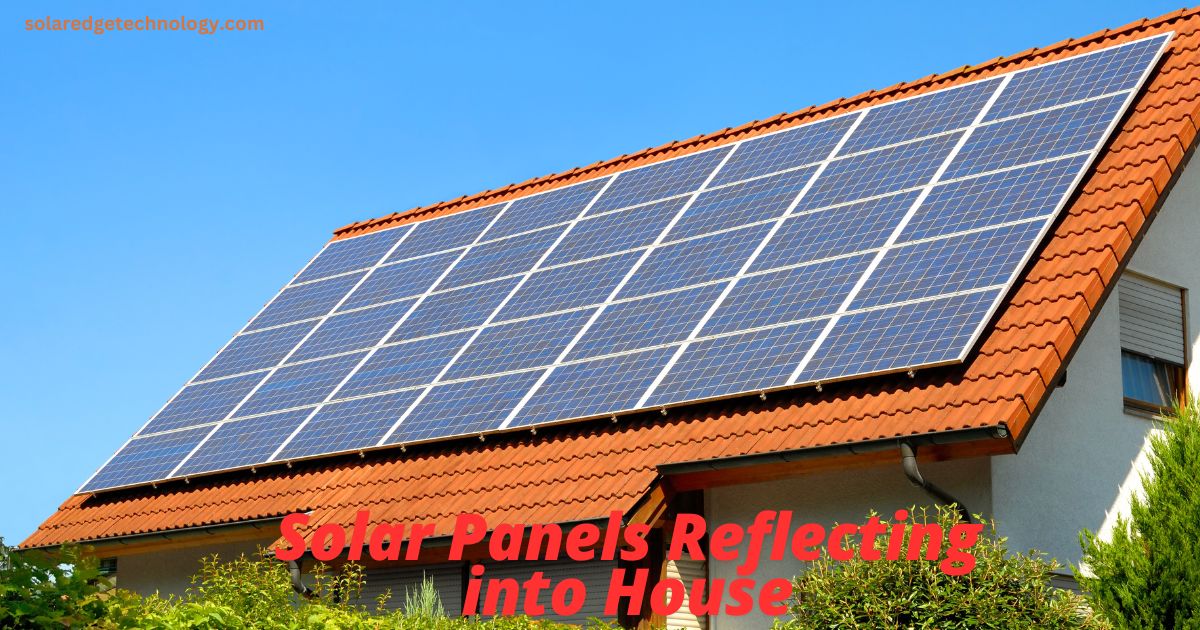Solar panels have become a popular and sustainable solution for energy generation worldwide. However, in some cases, solar panels reflecting into a house can create unwanted glare, disrupting the comfort and functionality of living spaces. This article provides an in-depth exploration of the causes, solutions, and advantages of addressing the issue of solar panels reflecting into houses.
Key Takeaways
- Solar panels reflecting into houses is a rare but possible phenomenon caused by their reflective surfaces.
- Addressing the glare issue involves proper placement, advanced coatings, and strategic landscaping.
- Solar panels offer significant environmental and economic benefits despite potential reflection challenges.
Understanding Solar Panel Reflection
What Causes Solar Panels to Reflect Light?
Solar panels are designed to absorb sunlight and convert it into electricity efficiently. However, their surfaces are not 100% absorbent and can reflect a portion of sunlight. This reflection can sometimes direct light into nearby buildings, leading to glare. Factors contributing to solar panels reflecting into houses include:
- Panel Orientation: Panels tilted toward the sun might inadvertently reflect sunlight into windows.
- Panel Surface Material: While most modern panels use anti-reflective coatings, older or cheaper models may lack this feature.
- Surrounding Environment: Open areas with reflective surfaces, such as glass or metal structures, can amplify glare.
Impact of Glare on Homes
Solar panel glare can affect homes in several ways, including:
- Disruption of Indoor Comfort: Excess light can make certain rooms excessively bright or hot.
- Potential Health Impacts: Prolonged exposure to glare may cause eye strain or discomfort.
- Interference with Outdoor Activities: Reflective glare can make outdoor spaces less enjoyable.
How to Prevent Solar Panels from Reflecting into a House
1. Proper Placement and Angle Adjustment
Ensuring that solar panels are positioned at the optimal angle can significantly reduce glare. Experts recommend:
- Orienting panels to face the sun directly during peak sunlight hours.
- Avoiding angles that direct reflected light toward nearby homes.
2. Use of Anti-Reflective Coatings
Modern solar panels often come with anti-reflective coatings that minimize reflection. These coatings:
- Improve light absorption efficiency.
- Reduce glare significantly, ensuring minimal disturbance.
3. Strategic Landscaping
Adding natural barriers like trees, shrubs, or hedges can block reflected light from reaching windows. Consider planting:
- Evergreen Trees: Provide year-round coverage.
- Tall Shrubs: Create an effective barrier without obstructing views.
4. Installing Solar Glare Screens
Solar glare screens are specially designed to diffuse reflected light. They can be installed on:
- Solar panels themselves.
- Windows of affected homes to reduce incoming glare.
5. Advanced Technology Solutions
Technological advancements are addressing the issue of solar panels reflecting into houses. Examples include:
- Bifacial Solar Panels: Absorb light on both sides, reducing reflection.
- Smart Solar Trackers: Adjust panel angles dynamically throughout the day.
Advantages of Solar Panels Despite Reflection Concerns
1. Environmental Benefits
- Solar panels reduce greenhouse gas emissions by generating clean, renewable energy.
- They decrease reliance on fossil fuels, promoting a sustainable future.
2. Economic Savings
- Homeowners can save significantly on energy bills by harnessing solar power.
- Governments offer incentives and tax credits for solar panel installations.
3. Increased Property Value
- Homes equipped with solar panels are often valued higher due to their energy efficiency.
4. Energy Independence
- Solar panels allow homeowners to reduce dependence on traditional energy grids, ensuring stability during power outages.
Comparison of Reflective and Non-Reflective Solar Panels
| Feature | Reflective Panels | Non-Reflective Panels |
|---|---|---|
| Surface Coating | Standard | Anti-reflective |
| Glare Potential | High | Minimal |
| Efficiency | Lower | Higher |
| Cost | Generally Cheaper | Slightly More Expensive |
| Suitability for Homes | Less Ideal | Highly Recommended |
Frequently Asked Questions (FAQs)
1. Why do some solar panels reflect sunlight?
Solar panels reflect sunlight due to their glass surfaces, which are not entirely absorbent. This is especially common in older or lower-quality panels without anti-reflective coatings.
2. Can solar panels’ glare damage my home?
While solar panel glare is unlikely to cause physical damage, it can disrupt comfort and cause minor health inconveniences like eye strain.
3. How can I stop solar panels from reflecting into my house?
Prevent glare by using anti-reflective coatings, adjusting panel angles, and implementing landscaping strategies like planting trees or shrubs.
4. Are anti-reflective solar panels more expensive?
Anti-reflective solar panels may cost slightly more upfront, but they offer higher efficiency and reduced glare, making them a worthwhile investment.
5. Is it possible to install glare-free solar panels?
Yes, modern solar panels with advanced technology, such as anti-reflective coatings and bifacial designs, minimize glare effectively.
Conclusion
Solar panels reflecting into houses is a manageable issue that homeowners can address through strategic planning and advanced technology. While glare can be an inconvenience, the environmental, economic, and energy independence benefits of solar panels far outweigh this challenge. By leveraging proper placement, anti-reflective coatings, and innovative solutions, homeowners can enjoy sustainable energy without compromising comfort.
Embracing solar technology paves the way for a cleaner, greener future—one where renewable energy powers our lives without disrupting our surroundings.
